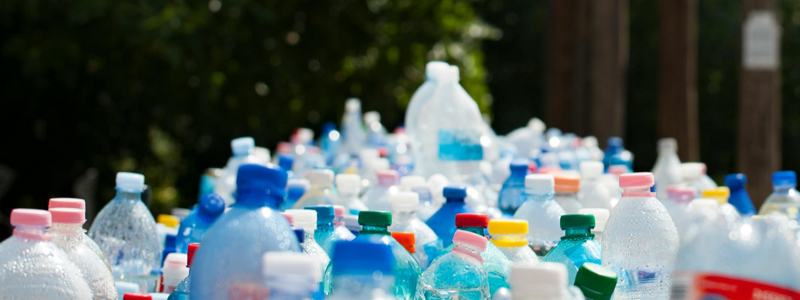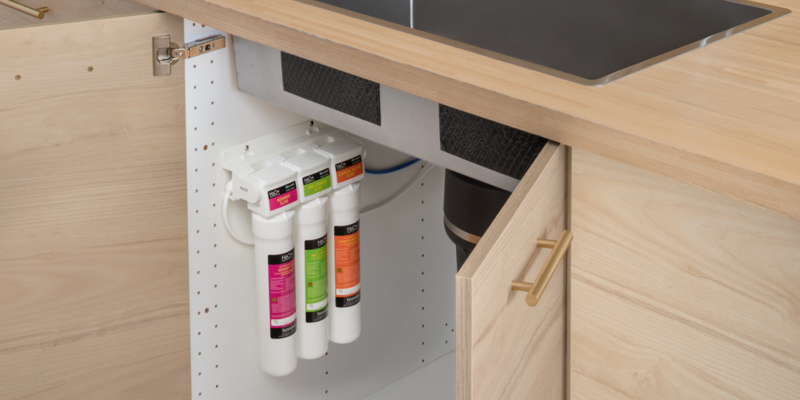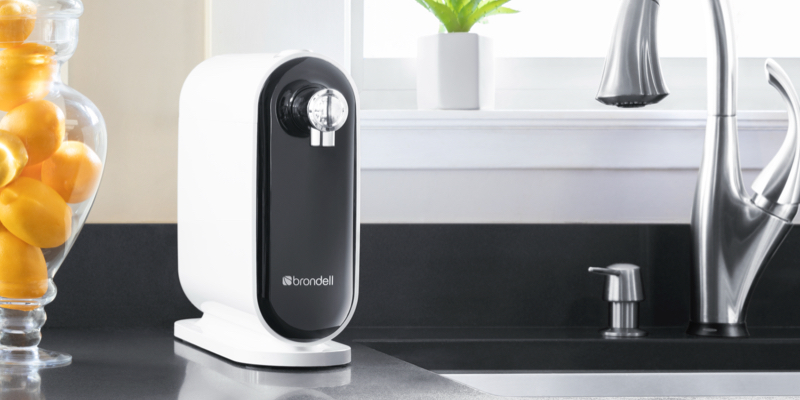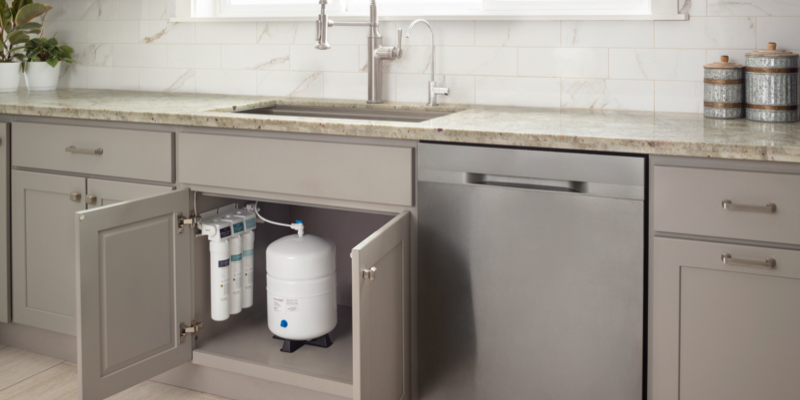
Walk into any supermarket or convenience store and you’ll see them: clear plastic bottles of water neatly lined up in rows with enticing images of tropical beaches and snow-capped mountains, or labeled to have enhancements like alkaline and other minerals. They’re convenient, abundant, and great for on-the-go use—but are plastic water bottles safe?
Studies in recent years have taken a deeper look into that question. Here’s what we know up to this point.
A deeper dive into plastic particles.
Concern about microplastics in bottled water is nothing new, but a recent study has provided some updated insight.. According to a study from Columbia University released earlier this year, just one liter of bottled water could contain anywhere from 110,000–370,000 plastic particles—a much higher number than the 300 particles per liter determined by previous studies.
The discovery of these much smaller nanoplastics—plastic particles smaller than 1 millionth of a meter—presents new kinds of potential dangers. In a recent article in the Los Angeles Times, Beizhan Yan, co-author of the Colombia nanoplastics study, explains why the size of these tiny plastic particles is of concern: “Even if they’re not that toxic at a larger particle size, when [plastic particles] become smaller they become toxic, because they can interfere in the cells, in the tissues, inside of the organelles.” In short, the smaller size of nanoplastics allows them to have an easier time dissolving into chemicals that could have negative effects on our bodies.

Plastics and human health.
There is still plenty of research to do on the effects of micro and nanoplastics on the human body—but the findings so far are concerning.
Polyethylene terephthalate (PET)—or plastic #1—is the most commonly used plastic for water bottles. While PET is generally considered safe, leaving it in the heat, like inside a hot car or on the beach, can pose potential risks. Food Safety News points out that UV radiation from sunlight can break down the “chemical bonds in plastics, including PET.” This reaction can cause the release of endocrine-disrupting chemicals, or EDCs, that can disrupt hormone systems and potentially lead to cancer, diabetes, reproductive disorders, and more.
Another common plastic, bisphenol A (BPA), has also been linked to potential health hazards. Mayo Clinic states that while BPA is safe at very low levels, there is evidence that exposure can lead to "possible health effects on the brain and prostate gland of fetuses, infants, and children.” Studies also point towards a possible link between BPA exposure and "increased blood pressure, type 2 diabetes, and cardiovascular disease," but more research needs to be done to establish a definitive connection.
A safer solution: filtered water.
For all the on-the-go convenience that bottled water offers, there are lots of drawbacks. Micro and nanoplastics have the potential to cause health issues through the chemicals found in plastic water bottles, and the bottles themselves harm the planet by contaminating natural environments with plastic waste.
Instead of relying on bottled water for your everyday drinking, switch to filtered tap water in a safe, reusable stainless steel bottle. This limits your exposure to microplastics while reducing single-use plastic waste. It also provides an endless supply of drinking water, whether you need a drink at home or to take with you.
If you’re ready to make the switch, you'll first need a water filtration system. These devices filter the water from your tap in a variety of ways (more on that later)—and can be installed without a plumber. Depending on the system you use, they also reduce unwanted contaminants like lead, mercury, non-biodegradable synthetic chemicals called PFAs, and more.
Filling a reusable, PET-and-BPA-free water bottle with filtered water is good for you and the planet. It limits your exposure to plastic particles, saves you money at the store, and reduces the amount of plastic that ends up in our oceans, landfills, and wilderness spaces. And according to the nonprofit, the Environmental Working Group, bottled water takes up to 2,000 times more energy to produce than tap water—so you'll be lowering your carbon footprint, too.
Welcome to the world of water filtration.
Choosing filtered water over bottled water is a good idea—but which water filtration system should you get?
Look for filtration systems that are Water Quality Association (WQA) certified and meet National Sanitation Foundation (NSF) and American National Standards Institute (ANSI) standards. Anything that holds these certifications is rigorously tested to reduce contaminants for safer, cleaner drinking water and performance that you can trust..
Here are three WQA-certified water filtration systems that meet these criteria to let you bring cleaner, safer water with you wherever you go.

Coral Three-Stage Under Sink Water Filtration System
Get advanced contaminant reduction and save space under your sink. Coral attaches neatly in your under-counter space and is tested to reduce an array of chemicals, like particulates, lead, chloramines, and more.

Cypress Three-Stage Countertop Water Filtration System
With its slim, compact design, this countertop dispenser attaches easily to your faucet for an endless supply of delicious filtered water. Perfect for renters or those lacking space under the sink.

Capella Reverse Osmosis Under Sink Water Filtration System
A robust water filtration system that utilizes powerful reverse osmosis technology, filtering contaminants out with a carbon pre-filter, a semipermeable membrane, and a carbon block filter. This system is certified to reduce 86 contaminants, including heavy metals, particulates, chlorine, and other known or emerging contaminants.
Say goodbye to plastic bottles.
The research is clear: there are more invisible plastics in bottled water than we realize. While there are still plenty of studies to be done in order to better understand the issue, we can take control of our health now—by using a proven water filtration system for cleaner, purer drinking water.
